Photos: Mosaic glass dishes and bronze jugs from Roman England
A man with a metal detector happened upon a Roman-era grave while he was canvassing a field in a U.K. village located between London and Cambridge. The man got in touch with local archaeologists, and together they uncovered the grave's contents, including glass mosaic plates, bronze jugs and nails from Roman shoes, likely buried to help the man travel in the afterlife. [Read the full story about the grave and the treasures it held]
Bronze jug
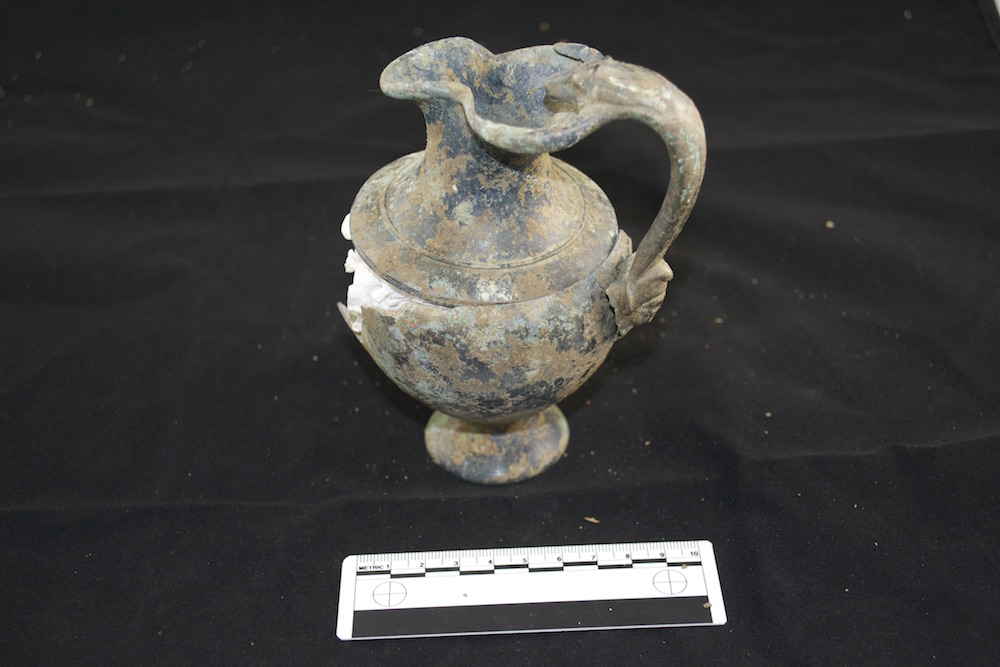
Using a metal detector, a man found several brass jugs, including one with a damaged body, buried in a grave from about A.D. 200. (Photo credit: Tony Fitzpatrick-Matthews)
Silver denarius
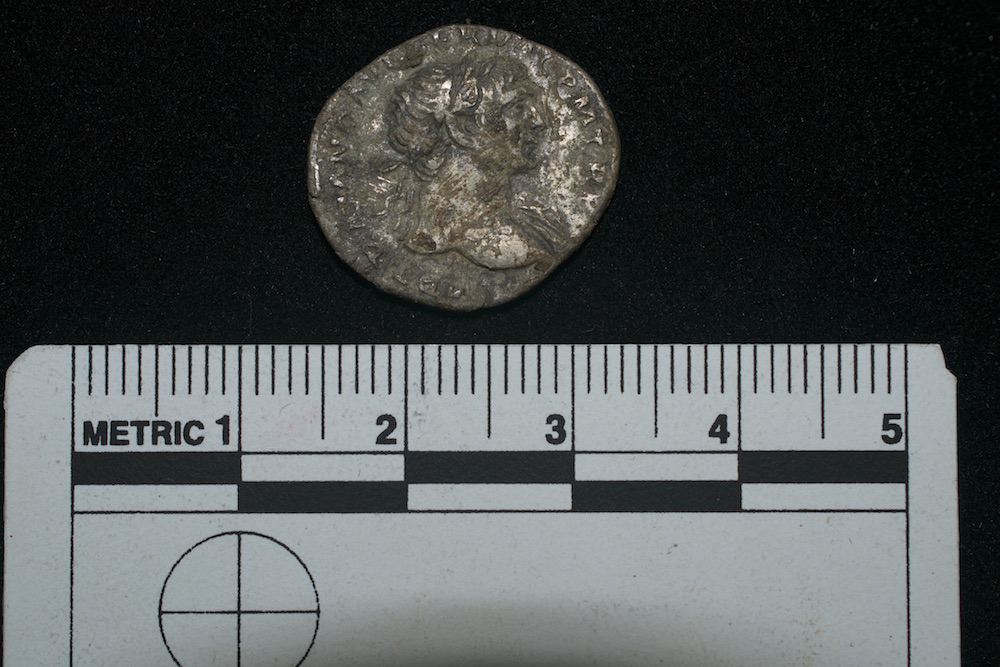
Archaeologists found this silver coin in a wooden box within the grave. The coin has the face of Emperor Trajan, who presided over Rome from A.D. 98 to A.D. 117, about 100 years before they believe the individual was buried. It's unclear why the coin is in the grave, but it's possible that it accidently made its way into the box, said Keith Fitzpatrick-Matthews, the archaeology and outreach officer for the North Hertfordshire District Council. (Photo credit: Tony Fitzpatrick-Matthews)
Glass mosaic
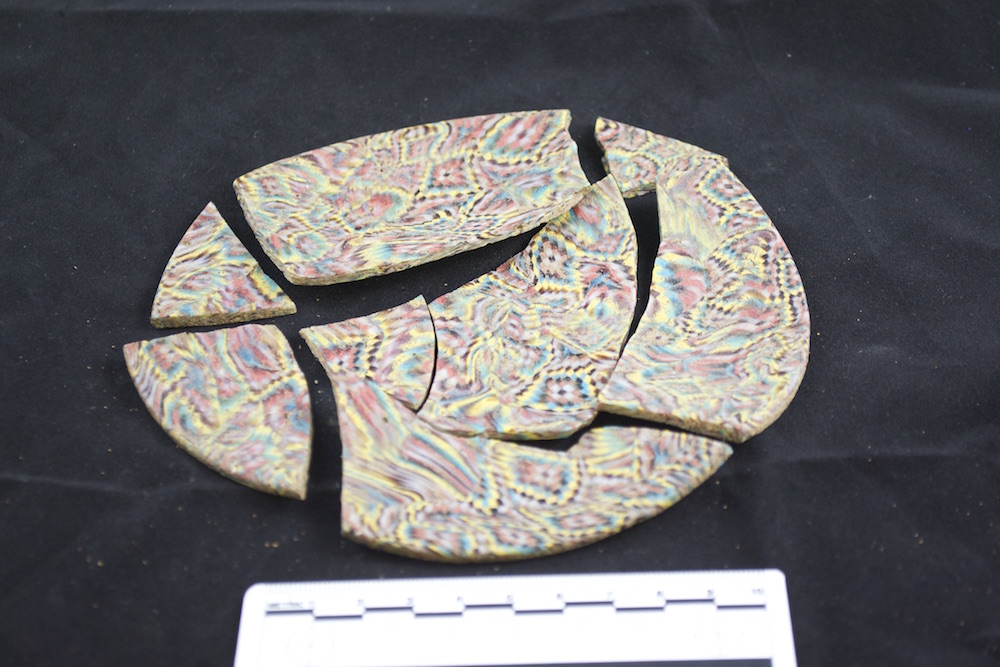
The broken pieces of this plate may look modern, but in fact date to about A.D. 200. It was likely made in Alexandria, Egypt, or in western Europe, Fitzpatrick-Matthews said. (Photo credit: Tony Fitzpatrick-Matthews)
Sign up for the Live Science daily newsletter now
Get the world’s most fascinating discoveries delivered straight to your inbox.
Broken pieces
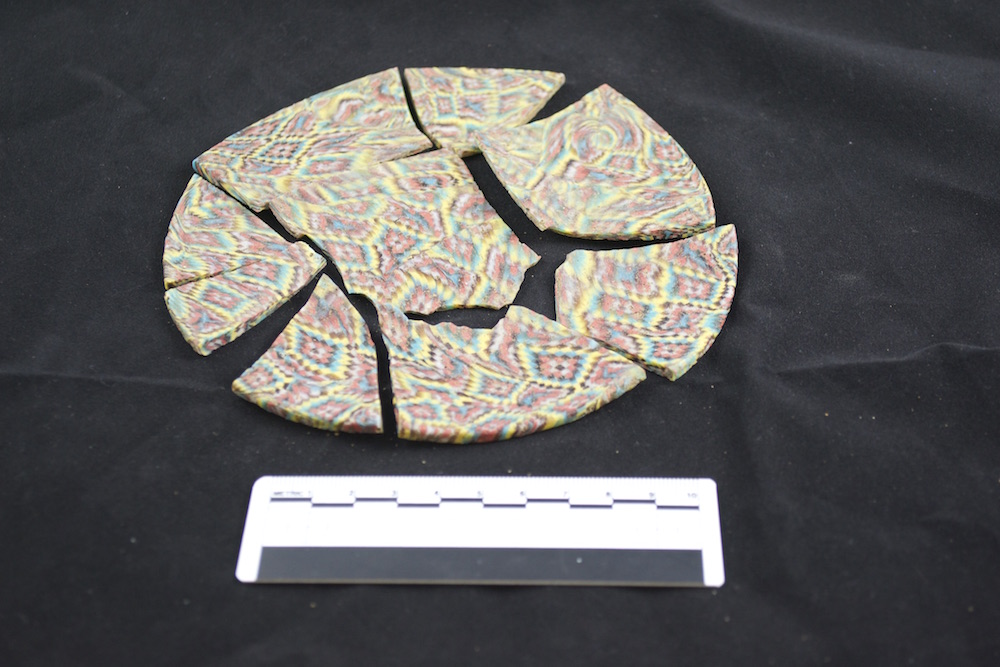
The archaeologists found a second, broken plate with a similar pattern in the grave.
"As far as we can tell, they're the only two dishes of this sort found in Britain," Fitzpatrick-Matthews said. (Photo credit: Tony Fitzpatrick-Matthews)
Ornate handle
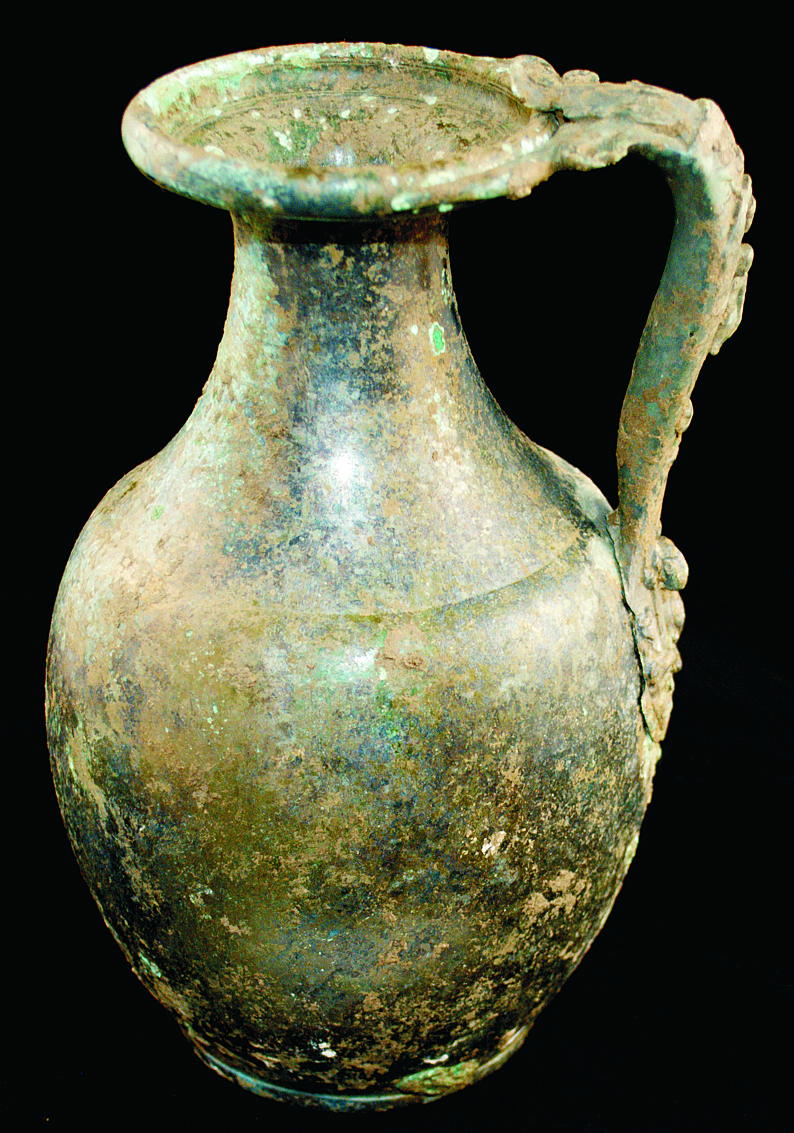
A bronze jug with an ornate handle was found in the grave. The archaeologists found evidence of a small building, likely a temple or shrine, and a villa next to the grave. It's likely that the person buried there was a wealthy individual, and the grave's contents, such as this jug, were the "second-century equivalent of bling," Fitzpatrick-Matthews said. (Photo credit: Tony Fitzpatrick-Matthews)
Libation dish
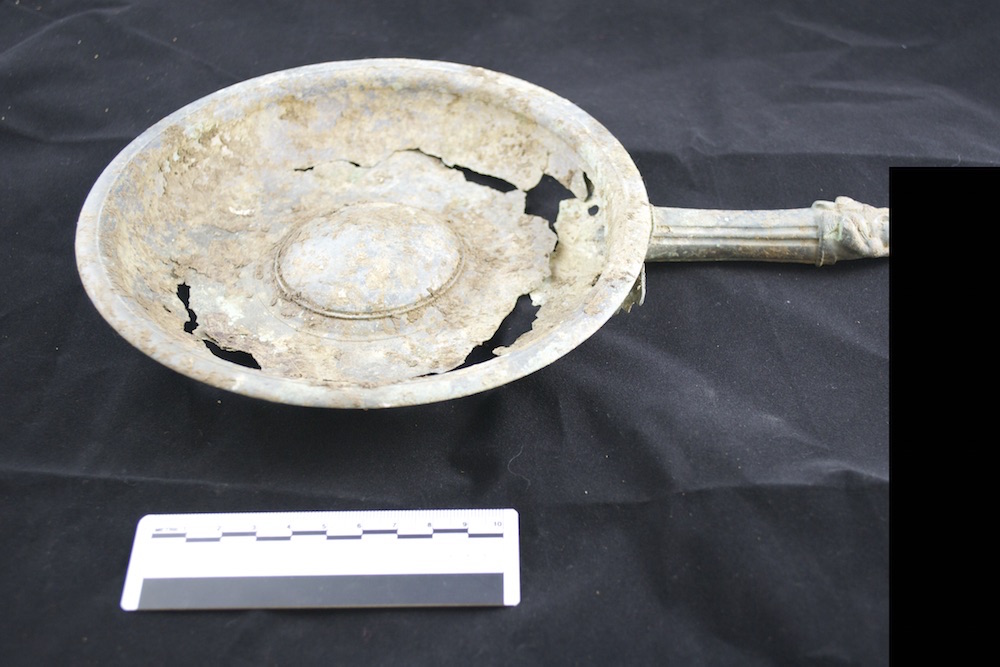
The grave also held a bronze libation dish, an instrument that was often used to pour out wine or blood as an offering to deities. The Romans called libation dishes "patera," which is Latin for "little dish," Fitzpatrick-Matthews said. (Photo credit: Tony Fitzpatrick-Matthews)
Mysterious initials
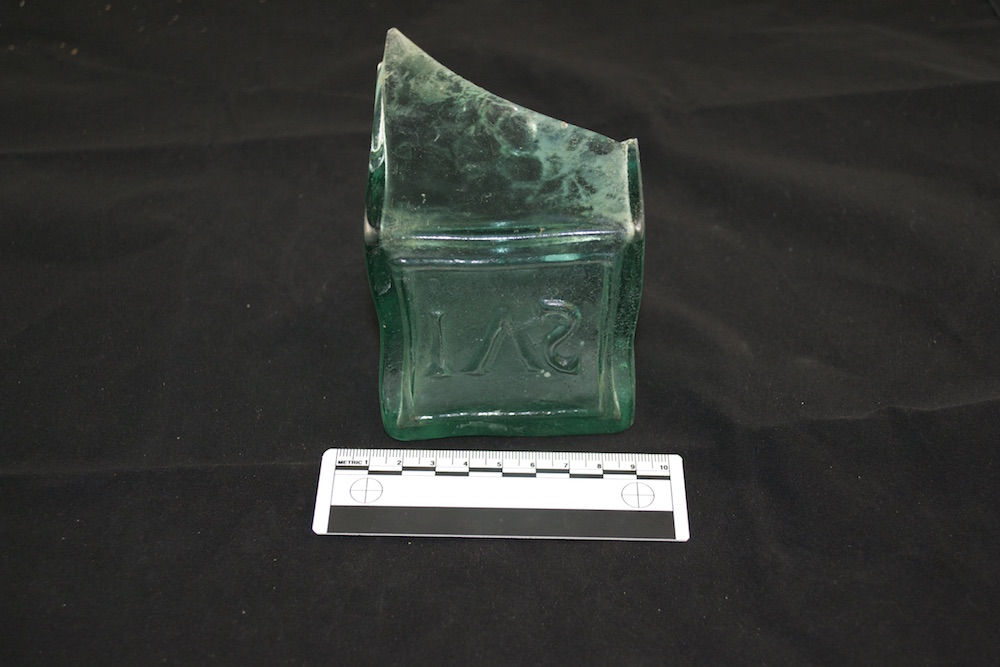
A square bottle found in the grave has the initials "IAS" on its base. It's unknown who made the bottle and what the initials stand for, but a similar bottle that was uncovered at a Roman fort in Scotland also dates to about A.D. 200, Fitzpatrick-Matthews said. (Photo credit: Tony Fitzpatrick-Matthews)
Follow Laura Geggel on Twitter @LauraGeggel. Follow Live Science @livescience, Facebook & Google+.

Laura is the archaeology and Life's Little Mysteries editor at Live Science. She also reports on general science, including paleontology. Her work has appeared in The New York Times, Scholastic, Popular Science and Spectrum, a site on autism research. She has won multiple awards from the Society of Professional Journalists and the Washington Newspaper Publishers Association for her reporting at a weekly newspaper near Seattle. Laura holds a bachelor's degree in English literature and psychology from Washington University in St. Louis and a master's degree in science writing from NYU.










